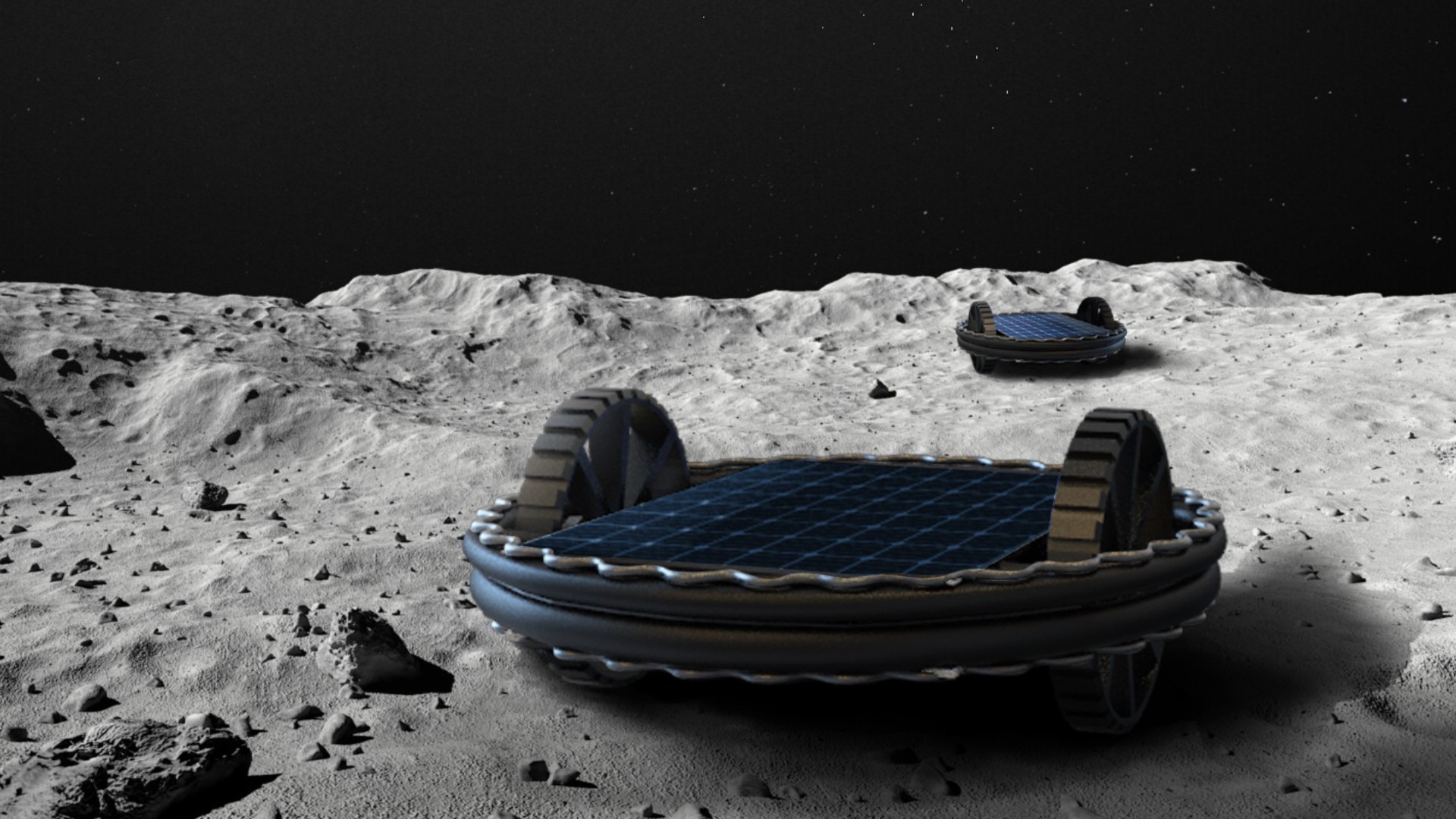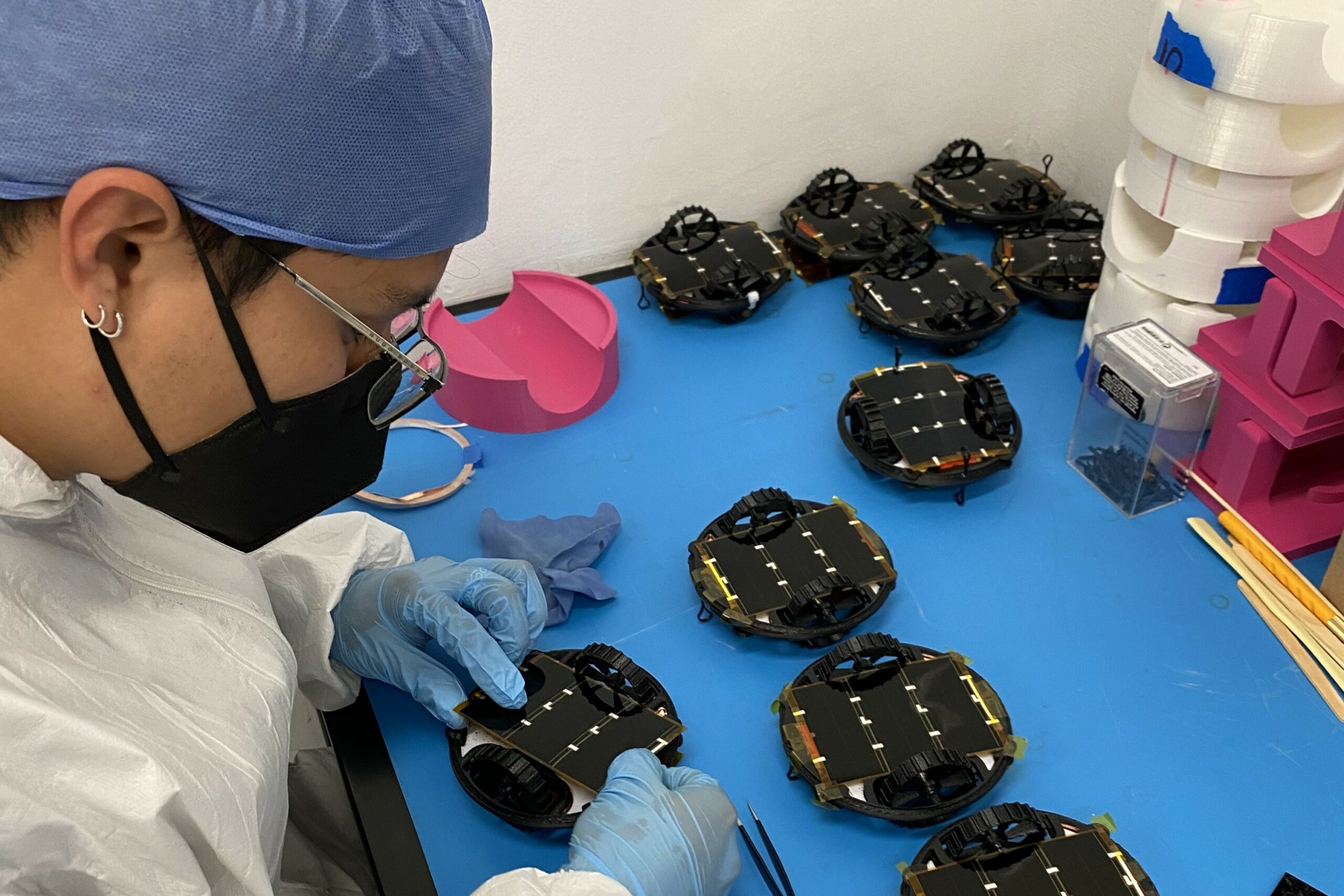Mexico's 1st moon mission will send 5 tiny robots aloft on Peregrine lunar lander Jan. 8

A historic private moon mission launches early on Monday (Jan. 8), and flying aboard will be five tiny robots developed in collaboration by a team of 250 university students in Mexico.
Astrobotic's Peregrine Mission One will launch atop United Launch Alliance's powerful new Vulcan Centaur rocket at 2:18 a.m. EST (0718 GMT) on Monday (Jan. 8) from Florida's Cape Canaveral Space Force Station. Aboard will be Astrobotic's Peregrine lunar lander alongside commercial payloads and NASA-developed scientific experiments.
Also onboard will be the five "autonomous micro-robots," as part of the COLMENA Mission developed by the Laboratory of Special Instruments (LINX) at the National Autonomous University of Mexico (UNAM). These diminutive explorers measure just 4 inches (10 centimeters) in diameter and weigh 2 ounces (60 grams). The robots each feature onboard wheels, sensors and computers that will allow them to study the wispy atmosphere of the moon. On its website, LINX calls COLMENA its "most ambitious mission."
Related: Vulcan Centaur rocket arrives at pad ahead of debut launch (photos)
Once the Peregrine lander reaches the lunar surface, it will vent excess fuel and allow it to dissipate before deploying the larger rovers that it carries.
Once that is complete, the COLMENA robots will be delivered to the surface of the moon via a tiny catapult that literally tosses them out onto the lunar regolith.
From there, the microbots will perform experiments to demonstrate the ability of autonomous robots to survive in the abrasive lunar regolith, which can damage many surfaces with which it comes into contact. According to LINX, the COLMENA robots will "make it possible to analyze the feasibility of building structures on planetary surfaces using swarms of self-organizing robots."
Breaking space news, the latest updates on rocket launches, skywatching events and more!
The tiny COLMENA robots will be able to swarm together and even connect to one another in order form a larger solar array, according to Mexico Now.
Mexican politicians are already praising the mission and highlighting how it could help boost the country's presence as a spacefaring nation. "COLMENA highlights all the values of the UNAM, and gives Mexican society a new way of seeing and understanding the modern world and the confidence that things are possible and that we can overcome our own limits," said Hidalgo Governor Omar Fayad in a statement. "It will be a turning point and, when it happens [...], all of Mexico's children and youths will know about it. Maybe it will inspire the next astronaut or the leader of the next missions."

Brett is curious about emerging aerospace technologies, alternative launch concepts, military space developments and uncrewed aircraft systems. Brett's work has appeared on Scientific American, The War Zone, Popular Science, the History Channel, Science Discovery and more. Brett has English degrees from Clemson University and the University of North Carolina at Charlotte. In his free time, Brett enjoys skywatching throughout the dark skies of the Appalachian mountains.

